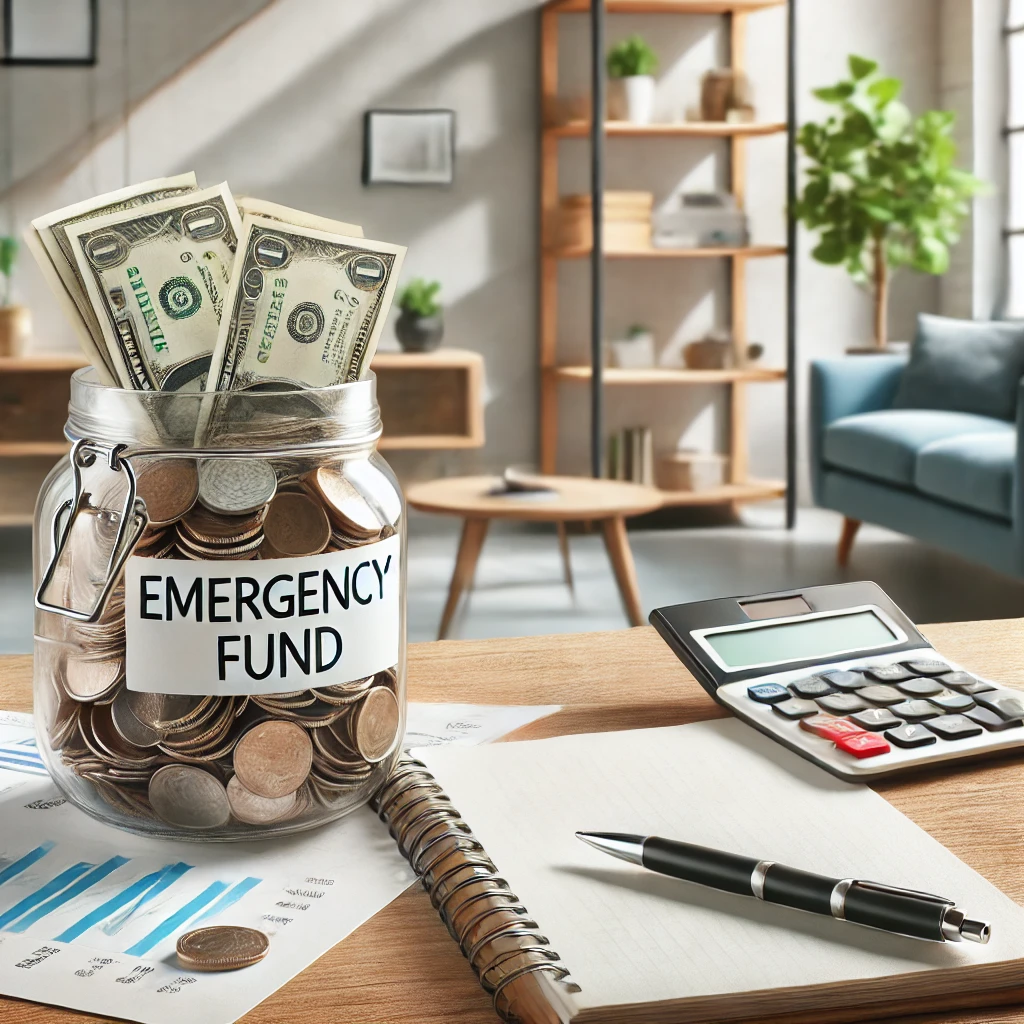Introduction
Imagine losing your job unexpectedly or facing a sudden medical expense. Could you handle the financial shock without borrowing money or using a credit card? If your answer is no, you’re not alone. Studies show that a significant percentage of people live paycheck to paycheck, with little or no savings for emergencies.
2025 is the perfect year to prioritize your financial security by building an emergency fund. This guide will walk you through everything you need to know to create a financial safety net, ensuring peace of mind and resilience in the face of life’s uncertainties.

1. What is an Emergency Fund?
An emergency fund is a dedicated pool of savings meant to cover unexpected expenses. These might include:
- Medical emergencies.
- Job loss or reduced income.
- Home or car repairs.
- Unexpected travel or family emergencies.
The key is to use this fund only for genuine emergencies, not for discretionary spending like vacations or shopping sprees.
2. How Much Should You Save?
The ideal size of an emergency fund varies depending on your personal circumstances. A general rule of thumb is to save three to six months of essential living expenses. Consider the following factors when setting your goal:
- Job Stability: If your income is irregular or you work in an unstable industry, aim for six months or more.
- Dependents: More dependents mean higher expenses and a larger fund.
- Health and Lifestyle: Consider any ongoing medical costs or other personal factors.
For example, if your monthly expenses are $3,000, aim to save between $9,000 and $18,000.
3. Steps to Build Your Emergency Fund
Step 1: Set a Target Amount
Determine how much you need by calculating your essential monthly expenses. Include costs like rent, utilities, groceries, insurance, and minimum debt payments. Break this target into smaller monthly or weekly savings goals to make it manageable.
Step 2: Open a Separate Savings Account
Keep your emergency fund separate from your regular checking account to reduce the temptation to spend it. Look for an account with:
- High interest rates.
- No fees or minimum balance requirements.
- Easy access in case of emergencies.
Step 3: Automate Your Savings
Set up automatic transfers from your checking account to your emergency fund. Automating your savings ensures consistency and reduces the effort required to save.
Step 4: Cut Back Temporarily
Review your spending habits to identify areas where you can cut back. For instance:
- Skip dining out and cook at home.
- Pause unnecessary subscriptions.
- Delay big purchases.
Redirect the money saved into your emergency fund.
Step 5: Look for Extra Income
Boost your savings by generating additional income. Options include:
- Taking on a side hustle.
- Selling unused items.
- Freelancing or offering services in your area of expertise.
4. Where to Keep Your Emergency Fund?
It’s important to store your emergency fund in a safe and accessible place. Here are a few options:
High-Yield Savings Account
- Offers higher interest rates than traditional savings accounts.
- Provides quick access to your funds.
Money Market Account
- Combines features of savings and checking accounts.
- May offer slightly higher interest rates but could have minimum balance requirements.
Avoid Risky Investments
- Do not invest your emergency fund in stocks, mutual funds, or other volatile instruments. The goal is safety and liquidity, not growth.
5. Common Mistakes to Avoid
Using the Fund for Non-Emergencies
- Avoid dipping into your emergency fund for vacations, gadgets, or other non-essential expenses.
Keeping It in an Inaccessible Account
- Don’t lock your funds in accounts with withdrawal restrictions, like certificates of deposit (CDs).
Failing to Replenish After Use
- If you use your emergency fund, prioritize replenishing it as soon as possible to maintain your safety net.
6. Tips for Staying Motivated
- Visualize Your Progress: Use savings trackers or apps to monitor your fund’s growth.
- Celebrate Small Wins: Reward yourself (modestly) when you hit milestones, like saving your first $1,000.
- Stay Focused on Your Goal: Remind yourself of the peace of mind and financial freedom you’re building.
Conclusion
Building an emergency fund is one of the most important steps toward financial independence. It’s not just about having money for a rainy day; it’s about creating stability and security for you and your family.
Start small, stay consistent, and make 2025 the year you take control of your financial future. Your future self will thank you.
